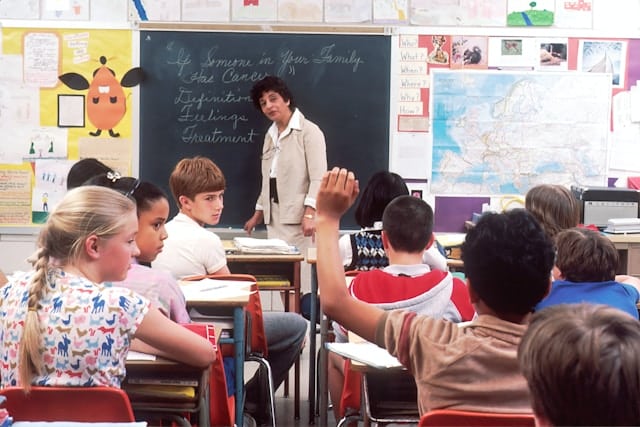What Are the Benefits of Multi-Sensory Learning Environments in Special Education?

Understanding Multi-Sensory Learning
As educators and caregivers, it’s essential to understand and embrace the concept of multi-sensory learning. This pedagogical approach engages more than one sense at a time, enabling students to learn more effectively. It’s especially beneficial for children with special needs, particularly those on the autism spectrum, who might find traditional classroom settings challenging.
Multi-sensory learning incorporates the use of visual aids, tactile experiences, auditory inputs, smells, and tastes to provide a comprehensive learning environment. This approach enhances students’ cognitive skills, communication abilities, and overall interest in studying, all while making teaching more engaging and effective.
A lire aussi : How Is Nanotechnology Impacting Drug Delivery Systems in the UK?
Let’s delve deeper into the multi-sensory learning approach and its significance in special education.
The Role of Multi-Sensory Rooms in Education
A multi-sensory room, also known as a sensory room, is specifically designed to stimulate multiple senses simultaneously. Equipped with various items like lights, sounds, fragrances, and tactile objects, these rooms create a stimulating environment that facilitates learning while catering to children’s sensory needs.
A lire en complément : What’s the Latest in Sustainable Urban Mobility Planning in the UK?
These rooms have gained popularity in special education for their potential to aid students with sensory processing disorders. For children on the autism spectrum, such environments provide the necessary sensory inputs to help manage their sensory overload or under-stimulation.
In a multi-sensory room, different activities can be conducted to engage various senses. For example, visual activities might involve projecting images onto walls or using light-up toys. Tactile activities could include playing with textured toys, and auditory activities could range from playing calming music to using noise-cancelling headphones.
Impact on Learning and Skill Development
The introduction of multi-sensory rooms in schools has proven to be beneficial in several ways, including enhancing learning capabilities and skill development.
By providing a tailored environment, children can focus better, thus improving their cognitive skills. Tactile activities can help develop fine motor skills, while auditory exercises can enhance their listening abilities. Visual stimulation, on the other hand, can improve their perception and understanding of the world around them.
Moreover, these rooms allow children to interact with their surroundings at their own pace, promoting self-regulation. This, in turn, boosts their confidence and instills a sense of independence.
Multi-Sensory Techniques and Teaching Approaches
Incorporating multi-sensory techniques into teaching approaches can significantly enhance the learning experience for students with special needs. Using a variety of teaching mediums such as visual aids, tactile equipment, and auditory tools, educators can convey information in a manner that resonates with each child’s unique learning style.
For instance, an educator can use a combination of visual charts, audio narrations, and tactile objects to explain a concept. This allows students to understand and retain the information more effectively, as it caters to their preferred learning methods.
Furthermore, by incorporating real-world applications and practical examples, teachers can ensure that learning is not just theoretical but also relevant and engaging.
The Importance of a Multi-Sensory Environment for Students with Autism
For students on the autism spectrum, a multi-sensory environment can be incredibly beneficial. Many of these students struggle with traditional teaching methods and classroom environments, making learning a challenging process.
In a multi-sensory learning environment, students with autism can interact with their surroundings in a way that suits their sensory preferences. This personalised approach can significantly improve their learning outcomes by reducing stress, increasing focus, and fostering engagement.
Importantly, multi-sensory learning also encourages social interaction. By participating in group activities in a sensory room, students can improve their communication and social skills, which can be particularly beneficial for those with autism, who often struggle in these areas.
In conclusion, the adoption of multi-sensory learning environments in special education offers numerous benefits, making it an approach worth considering for all educators and caregivers involved in this sector.
Incorporating Multi-Sensory Activities in Teaching
Besides setting up multi-sensory rooms, it’s crucial to embed multi-sensory activities into the daily lesson plans. This multisensory instruction is a powerful tool that can make learning more engaging, meaningful, and effective for children with special needs, particularly for those on the autism spectrum.
Multisensory activities need not be complex or expensive; simple and creative tasks can offer substantial sensory experiences. For instance, educators can use materials with different textures to teach about shapes or use fragrant herbs to explain the concept of smell. They can also incorporate technology, like interactive whiteboards and tablets, to create engaging visual and tactile experiences.
These activities not only enrich the learning process but also foster cognitive development. Regularly engaging multiple senses helps to strengthen neural connections, enhancing memory, concentration, and understanding. It also supports the development of motor skills, as students are often required to manipulate various objects, encouraging physical interaction with the learning material.
Moreover, multi-sensory activities can be adapted to fit the different learning styles of students. Whether a student learns best through visual, auditory, or tactile methods, multi-sensory instruction can accommodate their preference, ensuring that learning is effective, enjoyable, and accessible for everyone.
Conclusion: Embracing the Multi-Sensory Approach in Special Education
Multi-sensory learning environments have proven to be a game-changer in special education, offering a myriad of benefits for children with unique learning needs, particularly those on the autism spectrum. By engaging multiple senses, multi-sensory instruction makes learning more accessible, engaging, and effective.
These sensory environments, specifically sensory rooms, provide a safe and stimulating space where students can explore, learn, and grow at their own pace. They help children manage sensory processing disorders, enhance cognitive development, and improve motor skills.
Additionally, incorporating multisensory activities into daily teaching practices can cater to various learning styles, ensuring every child gets the chance to succeed in their own unique way. This approach also fosters social interaction, critical for autistic children who typically find this challenging.
Embracing a multi-sensory approach in special education is not just about improving academic outcomes; it’s about equipping students with the tools and skills they need to navigate and interact with the world around them. As educators, caregivers, and stakeholders, it’s our responsibility to create a learning environment that respects and caters to the needs of every student.
In closing, multi-sensory learning environments aren’t just beneficial—they’re essential. They offer a holistic, engaging, and effective approach to education, making every student’s potential within reach.
